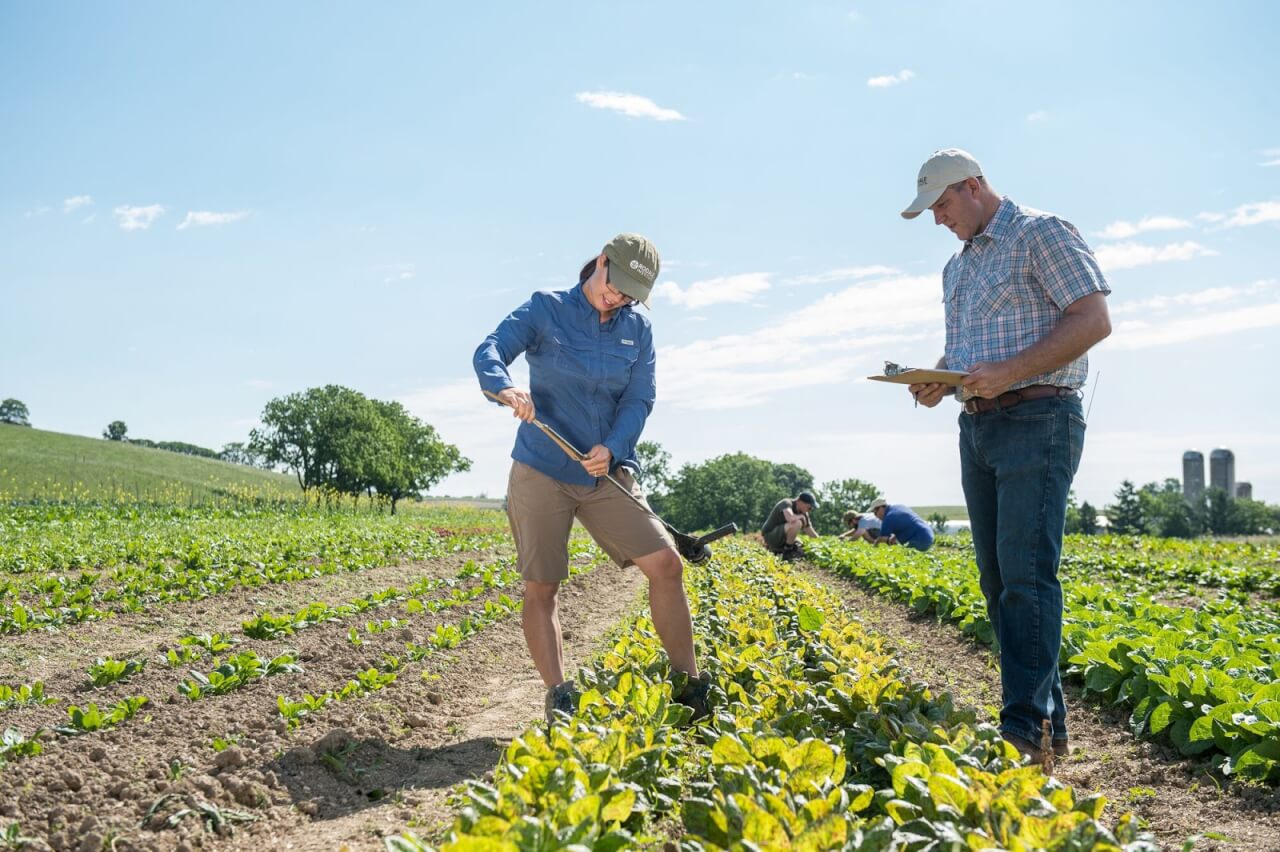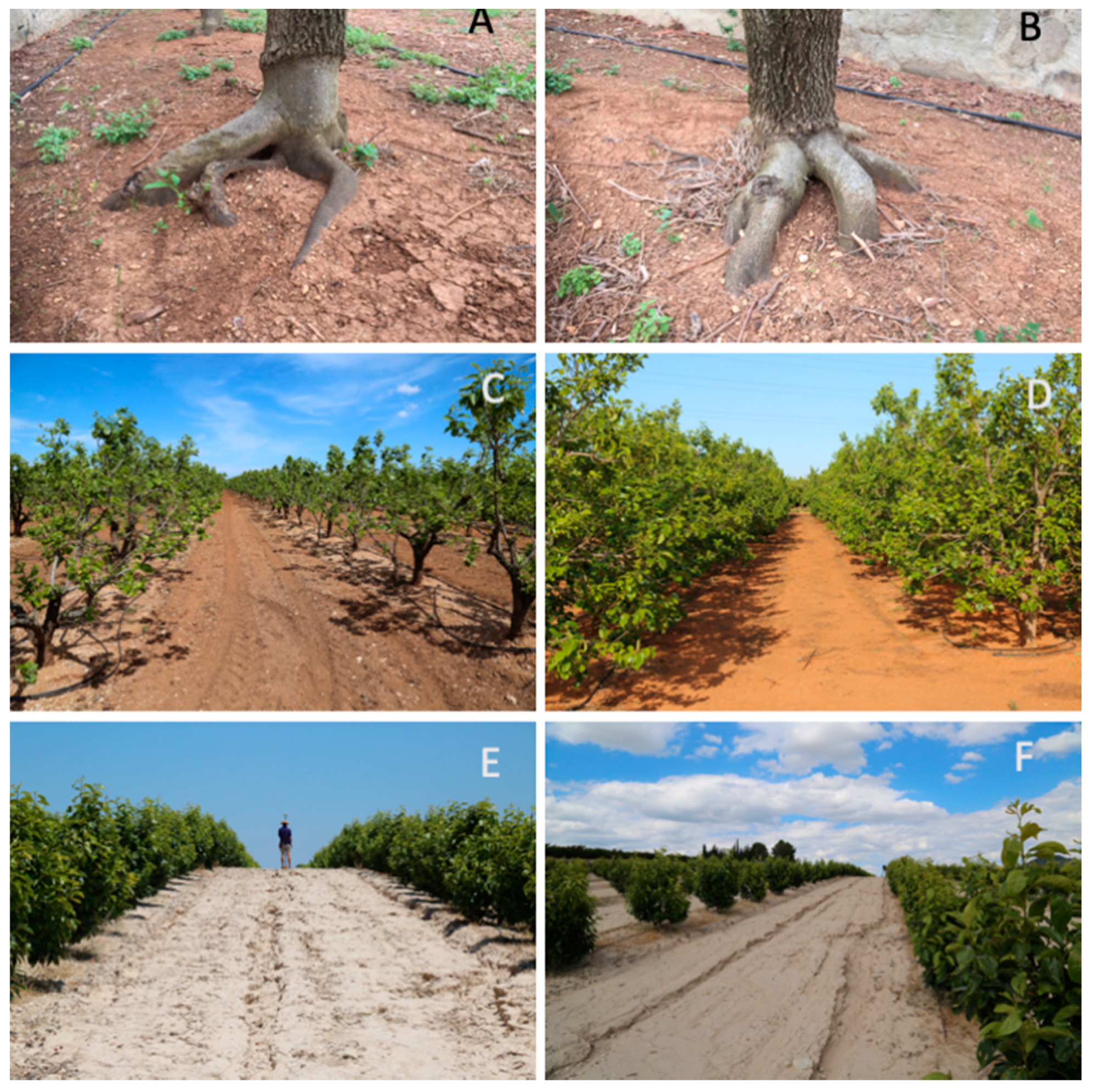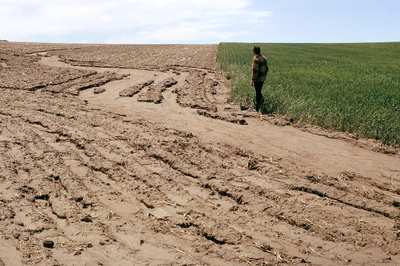Organic Agriculture Largely Uses No-till Farming Which Reduces Erosion
No-till farming in which farmers dont plow under their fields between crops releases far smaller amounts of a potent greenhouse gas into the air than conventional farming according to a new st. Practice of raising crops and.

Can California S Organic Vegetable Farmers Unlock The Secrets Of No Till Farming Civil Eats
But so far research has been limited to small clusters of farms.

. Although this method involves more work case studies have indicated that no-till farming greatly reduces erosion. Minimizes erosion in mountainous areas-Intercropping. Therefore it effectively mitigates all forms of soil erosion caused by machinery use water and wind and is thus considered to be a major improvement regarding soil erosion control.
Reduces soil loss and maintains soil. -careful use of fertilizers. This helps improve the biodiversity of the soil and mitigate erosion particularly in dry or sloped soils.
FILE - In this April 28 2004 file photo Mearl McCartney plants soybeans using a no-till drill near Bowling Green Ohio. Barren and exposed soils are. Intact soils also maintain root channels that facilitate greater water infiltration and storage.
No-till tends to increase soil organic matter in the top several inches of the soil. To find out whether no-till farming prevents soil loss on a larger scale geologist David Montgomery of the University of Washington Seattle scoured agricultural studies dating back. No-till actively maintains soil surface cover by vegetation and reduces soil disturbances to the very moment of planting.
The degree of effectiveness of different tillage practices depends on the degree of soil manipulation which effects the residue distribution on the soil surface. No-till farming greatly reduces soil erosion Mirsky said. Crops planted to hold soil in place between the times that main food crops are growing.
The Stroud Center has been a long-term supporter of no-till farming and planting cover crops which minimize soil erosion and improve soil structure and water infiltration rates. Grow healthy food and recharge the soil so it can. But the alarming rates of soil erosion related to conventional agriculture practices have made us reconsider this practice in the form of no-till farming.
The Perfect Match - No-Till Farming and Micro-Drainage No-till farming is an environmentally friendly farming technique that is designed to minimize how much soil is disturbed through tillage. Minimum or no-till seeding technology is the core of conservation tillage which can effectively reduce soil degradation by water and wind erosion. Cover crop roots increase nutrient cycling in the soil and biodiversity is increased.
Counteract is by no-till or zero-till farming which impart benefits to the soil in terms of increasing soil organic matter and water holding capacity thus defeating soil erosion effectively. Nearly all annual weeds are smothered. The decomposing cover crop builds soil and substantially reduces erosion.
The technique was largely employed as a means of addressing soil erosion issues but California farmers do not have a lot. No-Till Farming usually requires more human labor since it largely eliminates heavy machinery but over time farmers will reduce expenses on agricultural inputs like fertilizers and pesticides. In South Dakota during the spring of 2021 a 34000-acre organic farm without adequate conservation practices experienced significant soil loss.
Organic no-till offers a wealth of benefits. This practice provides farmers a way to grow more with less while conserving limited topsoil and minimizing erosion. After having started in 1972 the total no-till area of Brazil is now as high as 236 million ha.
This farming practice champions two key objectives. Sustainable Agriculture with No Till Farming. It also reduces soil erosion as well as the leaching of nitrates into groundwater and surface water.
A new three-year study by Purdue University found that no-till farming in. No-till or low-till farming practices have been around since ancient times think 3000 BC. Equally important in minimizing soil erosion is the adoption of a cropping system along with conservation tillage practices such as no-till strip-till and ridge-till.
Up to 10 cash back Soil erosion rates were significantly lower when soil cover was above 30. It is an essential part of agricultural. No-till in conjunction with cover crops can reduce erosion boost soil nutrients and organic matter and conserve moisture.
No-till or zero till agricultural systems utilize a combination of herbicides and specialized tools to plant corps without having to disturb the soil by tilling. Reduces erosion on hillsides-Terracing. No-till farming does not disturb or loosen the soil except in very small amounts so wind and water are much less able to get under the soil and move it which is what erosion is.
No-tillage farming methods are used in other production areas of the world particularly in South America. In conclusion this study demonstrates that both organic farming and conservation agriculture reduce soil losses and showed for the first time that reduced tillage practices are a major improvement in organic farming when it comes to soil erosion control. Such as soybeans and corn help restore soil nutrients and reduce pest impacts-Contour Farming.
In addition because it uses fertilizers derived largely from animal and plant wastes and nitrogen-fixing cover crops it also recycles organics and nutrients back. On the other hand. As a whole organic farming typically uses fewer pesticides compared to conventional farming.

Pin By Danielle Nierenberg Food Tank On Foodtank The Food Think Tank Farm Tourism Organic Farming Sustainable Agriculture

The Elusive Goal Of No Till Organic Modern Farmer

Iida Ruishalme On Twitter Plant Science Soil Types Of Soil

Ag 101 Facebook Biodynamic Gardening Soil Improvement Hydroponics

Erosion 101 Everything You Need To Know About Soil Erosion Nrdc

Suitable Methods Of Tillage For The Farm

Usda Ers No Till Or Strip Till Use Varies By Region

No Till Farming Practices To Boost Agricultural Productivity

No Till Farming Practices To Boost Agricultural Productivity

Soil Erosion Why It Happens And What We Can Do About It Project Learning Tree

Water Free Full Text Tillage Versus No Tillage Soil Properties And Hydrology In An Organic Persimmon Farm In Eastern Iberian Peninsula Html

From Land Grab To Soil Grab The New Business Of Carbon Farming Grain

Farming Ads Usa Farmingadsusa Ap Environmental Science Contour Farming Crop Rotation

No Till Farming Practices To Boost Agricultural Productivity





Comments
Post a Comment